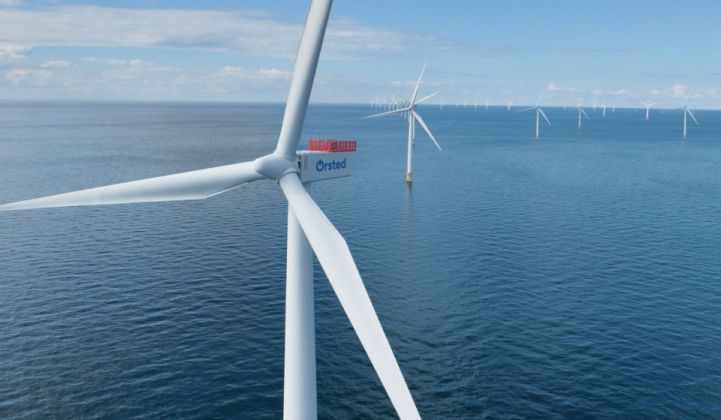Taiwan’s first offshore wind allocation last month could jolt other markets into action as Asia-Pacific nations race to seize manufacturing capacity.
Robert Liew, senior analyst for the Asia-Pacific region at MAKE Consulting, told GTM that government planners in Japan and South Korea might fast-track offshore wind plans following Taiwan’s announcement.
“Each of those countries wants to be the hub for offshore wind within the region,” he said.
“Japan’s government officials are trying to make sure Japan [secures] first place for offshore in East Asia, but given the scale of projects available right now, Taiwan is the front-runner.”
The 3.8 gigawatts of capacity awarded in Taiwan was slightly more than the 3.5 gigawatts initially planned. What’s more, the Taiwanese government is due to award a further 2 gigawatts of capacity later this year, Liew noted, which should be built before 2025.
Lawmakers are also expected to auction a further 3 or 4 gigawatts for deployment after 2025, although this has yet to be confirmed, said Liew.
The volumes are small compared to China, which already has one of the largest offshore wind markets in the world and is expected to install up to around 28 gigawatts of capacity by 2027, according to MAKE senior consultant Andy Li.
However, the Chinese market is largely closed to outside interests. Taiwan, on the other hand, presents a major opportunity for international companies. Not only does it not have an offshore supply chain of its own, but it is also expressly off-limits for many Chinese players.
This makes it an ideal market for experienced project developers looking to build a presence in the nascent Asia-Pacific offshore wind sector. Unsurprisingly, European players dominated last month’s auction.
Copenhagen Infrastructure Partners, for example, bagged three projects, as did the German company WPD. Ørsted of Denmark picked up another two.
“Where local players did win, it was usually in partnership with an experienced player,” observed Richard Heap, editor-in-chief at specialist analyst group A Word About Wind.
Yushan Energy is partnering with Northland, which is a veteran of European projects, and Swancor is teaming up with Macquarie, he said. Only one local energy company, Taipower, had picked up a project on its own.
Alongside foreign project developers, turbine original equipment manufacturers including Siemens Gamesa and MHI Vestas are reported to be eyeing the Taiwanese market with interest.
Now that Taiwan has committed to a pipeline of projects, there could a big incentive for OEMs to set up shop in the country. Since Taiwan forbids the importation of generators from China, turbines will have to be shipped from Europe, adding to costs.
Manufacturers will be aware that the Taiwanese market is not entirely a safe bet, though. Elevated risks mean there is a 35 percent to 45 percent insurance premium associated with building offshore projects in Taiwan as compared to Europe, said Jatin Sharma, president of the renewable energy underwriter GCube Insurance.
With tensions escalating between the island and mainland China, and with live fire drills in the Taiwan Strait, the risk of physical damage to assets, as well as the chance of confiscation, expropriation, nationalization and deprivation of projects was high, he said.
Another concern for some observers is the scale of Taiwan’s initial build-out plans. "Taiwan's offshore wind energy goals are incredibly ambitious," said Dr. R.V. Ahilan, joint group chief executive and head of consulting firm LOC Renewables.
“The island aims to install close to 6 gigawatts of capacity in six years, a target which took the U.K. three times as long to achieve. This will add to the challenges already faced by the market, including an inexperienced local supply chain and extreme weather.”
Despite this, it may be hard for other Asia-Pacific markets to catch up with Taiwan once the region’s offshore industry begins to gather speed post-2020.
“Excluding China, Taiwan is the hottest market at the moment,” said Liew. “South Korea and Japan have got their own supply chains and domestic offshore turbine manufacturers. In theory, they are open to foreign competition, but in practice, they are more insular compared to Taiwan.”




